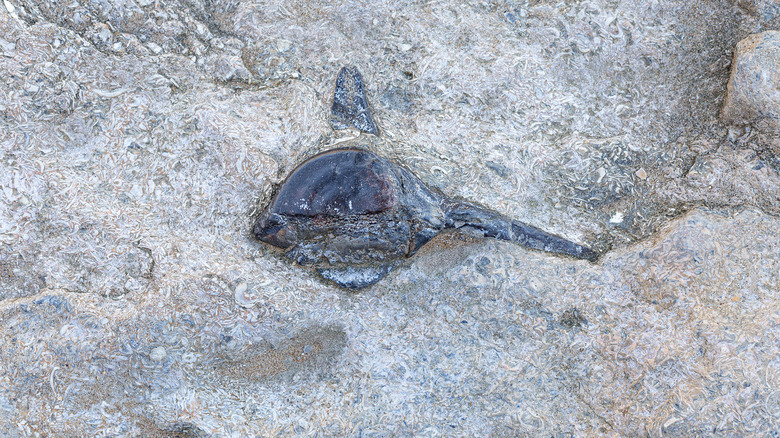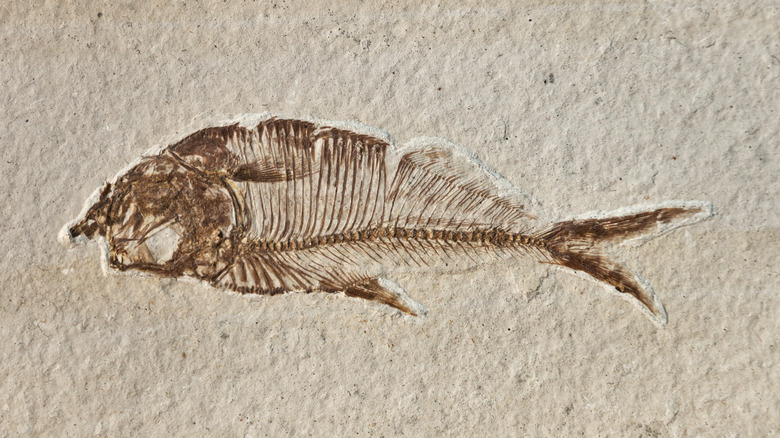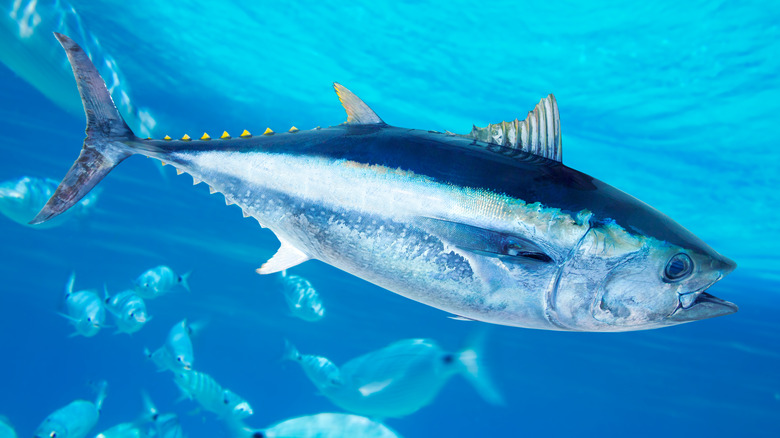The Oldest Well-Preserved Brain Is Over 300 Million Years Old
Fossils are the preserved remains of dead animals and other organisms. Common fossils include hard body parts like bones, teeth, and shells (via the American Museum of Natural History), but occasionally, fossils of softer tissues are discovered. And some of them are quite old. In 2017, researchers found soft tissue from the rib of a dinosaur that walked the Earth some 195 million years ago, per Phys.org. In 2015, Canadian scientists discovered soft tissue from the leg of a 75-million-year-old dinosaur, per History.
But a more recent discovery puts previous ones to shame — by millions of years. The find was a fossilized brain of a fish, and scientists believe that it is over 300 million years old. The fossil belongs to the extinct fish species Coccocephalus wildi, and it was found on the roof of a coal mine in Lancashire, United Kingdom, and it's around 319 million years old, according to a report published in the journal Nature.
The fossil has unusual features
The fossil was discovered more than 100 years ago, but only recently did experts decide to scan it, and that's when they made the surprising find. Matt Friedman, University of Michigan paleontologist and senior author of the study, said what set this scan apart from other soft-tissue fossils was a section that looked different. "I scanned it, then I loaded the data into the software we use to visualize these scans and noticed that there was an unusual, distinct object inside the skull," he said, the University of Michigan reports.
Other features that indicated the scientists were looking at something unepected was the structure's bilaterally symmetrical shape with hollow spaces. It also had spaces that resemble ventricles in brains. But one of the more interesting revelations of the scan was filaments that looked like cranial nerves that are similar to those belonging to the extinct bluegill fish, Phys.org reports.
Several conditions helped preserve the brain
The brain of this particular fish was well-preserved because sediment covered it before it had time to become oxidized. The study explains that another factor that aided in protecting the brain was the presence of a microenvironment inside the skull. Lead author of the study and doctoral student Rodrigo Figueroa said this condition might have produced pyrite, which helped preserve the brain tissue, per the University of Michigan.
The C. wildi is an ancestor to ray-finned fishes, which date back 400 million years, placing this particular discovery at the right time. In addition, this class of fish makes up most of the fish fossils that are found today, according to Britannica. However, the discovery reveals that C. wildi were different from ray-finned fish because their brains fold inward, while the brains of ray-finned fold outward. This information will help scientists understand how the brains of these fish evolved.


